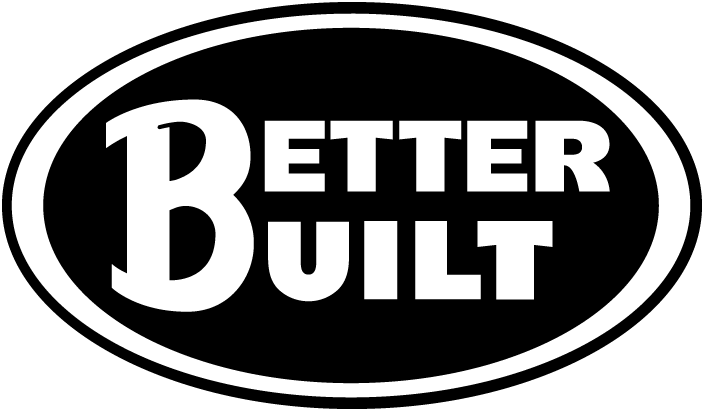Benefits of Dry Heat Sterilization in Laboratories
Life sciences and healthcare labs have several options for sterilizing equipment. One of the most common is dry heat sterilization.
Dry heat sterilization uses a high-temperature cleaning process to eradicate all forms of microbial life on laboratory instruments and materials. Dry heat sterilizer machines use electric coils (or other heating elements) to facilitate thorough decontamination without introducing moisture, making it optimal for sterilizing anhydrous substances, glassware, and metallic instruments.
At BetterBuilt, we’ve worked directly with life science laboratories, healthcare institutions, and animal research facilities for more than 70 years to provide the most robust sterilization equipment on the market. Today, we want to explain the major benefits of dry heat sterilization in lab settings. Let’s dive in.
1. Complete Elimination of Microbial Entities
The dry heat sterilization process uses high temperatures in sealed, insulated chambers to meticulously and irreversibly damage the structural and enzymatic components of microbial entities, thereby ensuring their complete elimination. The mechanism primarily involves the denaturation of proteins, oxidation of essential components, and disruption of membrane functionality within microorganisms.
By using hot air ranging in temperatures between 160°C and 170°C, the heat penetration kills bacteria, viruses, and fungi, and deactivates spores – which are notably resilient to adverse conditions. That being said, this lab sterilization method provides a thorough, comprehensive microbial eradication across a spectrum of materials, safeguarding laboratory processes against contaminants.
2. Preservation of Material Integrity
Laboratories often encounter materials sensitive to moisture – including certain types of metal and powders. Dry heat is the ideal sterilization method for cleaning many types of non-heat sensitive materials in research equipment, including (but not limited to):
- Glassware: Petri dishes, test tubes, flasks, pipettes
- Metallic Instruments: Scalpels, forceps, spatulas, scissors
- Ceramics: Crucibles, trays
- Anhydrous Substances: Certain chemical powders and compounds
- Ovens and Incubators: Especially those with complex, dense structures
- Glass Slides: Used for microscopy
- Inoculating Loops and Needles: Used for microbial transfers
- Metal Trays and Racks: For holding and transporting lab items
- Hollow Glassware: Such as burettes and graduated cylinders
- Desiccators: Used for preserving moisture-sensitive items
This type of sterilization uses heated air to exhaustively clean the material without compromising its integrity through unwanted hydration reactions or corrosion.
Your glassware, metal instruments, and anhydrous substances retain their pristine condition with the dry heat sterilization method, assuring that experimental outcomes are not tarnished by alterations so every result is a true reflection of research, not residual inconsistencies.
3. Energy Efficiency and Environmental Responsibility
Dry heat sterilization, especially in modern units, often contributes to better energy efficiency in lab operations.
Primarily because it doesn’t require water, dry heat sterilization avoids resource wastage and minimizes energy expenditure. The method typically employs electric coils or other heating elements, which in modern units, are designed for minimal energy usage.
Today’s dry heat sterilizers can maintain required temperatures without constant energy input due to effective insulation, ensuring energy isn’t wasted. Moreover, the absence of chemical agents further contributes to the eco-friendly nature, avoiding harmful waste disposal and reducing the laboratory’s overall environmental impact.
With more efficient energy consumption, the modern dry heat sterilization method balances performance with sustainability, ensuring lab sterilization processes are both cost-efficient and environmentally friendly.
4. Versatile Sterilization for Diverse Material Types
The applicability of dry heat sterilization spans across glass, metals, ceramics, and other heat-resistant materials. Its ability to sterilize without inducing material alteration ensures it is applicable to a diverse array of substances and tools.
Particularly, glass pipettes, Petri dishes, metal scalpels, and forceps are sanitized with dry heat due to their resistance to intense high temperatures. Similarly, materials prone to moisture damage, such as powders or anhydrous substances, benefit from the dry heat’s moisture-free sterilization.
Furthermore, dense structures that may shield microorganisms from steam under pressure, like ovens or incubators, are also suitable for this type of sterilization.
5. Nullification of Pyrogens
Pyrogens are fever-inducing substances, primarily derived from bacterial endotoxins, that pose a significant threat to life sciences lab experiments due to their potential to interfere with biological reactions and cellular responses.
In experimental settings, especially those involving cell cultures or in vivisection studies, the presence of pyrogens can induce unwanted inflammatory responses, yielding skewed or invalid results.
For labs dealing with biological research, mitigating pyrogenic contamination is crucial to maintain the accuracy and reliability of experimental outcomes. The common challenge is to ensure resultant data genuinely reflects the intended study, free from the influential havoc of unwanted microbial residuals.
Dry heat sterilization effectively denatures these entities, ensuring that materials are not merely sterile but also pyrogen-free. The absence of pyrogens ensures that biological experiments, especially those sensitive to endotoxin interferences, are conducted with assured accuracy and reliability, ensuring that results are genuine representations of scientific exploration.
What Are Your Options for Dry Heat Sterilization?
Within the process of scientific experimentation, sterilization is the unseen companion. The chosen sterilization methodology doesn’t just dictate the absence of microbial entities – it directly influences the reliability, authenticity, and smooth operational flow within a laboratory.
Dry heat is more than a cleaning method to achieve sterilization; it is a commitment to maintaining the sanctity of scientific endeavors, ensuring that each experiment, result, and discovery is untouched by microbial intrusions, material inconsistencies, or operational disruptions.
At BetterBuilt, we’re committed to providing the very best sterilization equipment to life sciences labs and healthcare facilities. We carry two dry heat sterilizer models, including the D600 Series and the D600C Series.
